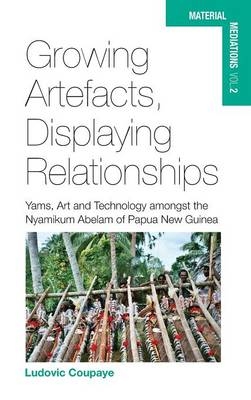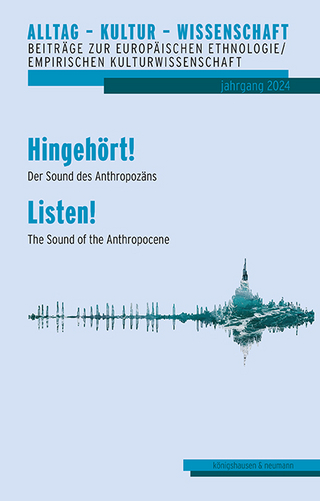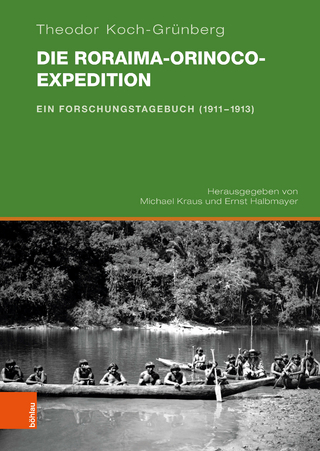
Growing Artefacts, Displaying Relationships
Berghahn Books (Verlag)
978-0-85745-733-2 (ISBN)
Ludovic Coupaye is a Lecturer in Material Culture Studies at the Department of Anthropology of University College London, a member of the Centre de Recherche et de Documentation sur l’Oceanie (CREDO, Marseille), and teaches anthropology of Pacific Arts at the École du Louvre in Paris. He has been a teaching fellow at the Sainsbury Research Unit (UEA) and assistant curator at the Musée du quai Branly in Paris.
Prolegomenon
Chapter 1. Getting there, Meeting the Things
Encounters
Towards the First Encounter
Encounters in Display
The General Setting
The Structure of the Book
Chapter 2 – Of Yams and Ethnography
Yams as Artefacts
General Description of the Plant: A Bi-polar Artefact
General Description of the Tuber
Shapes, sizes, and colour as criteria
The skin: sëpë
The root system: mëgi
General Description of the Vine
The stem and its end: paatë and kutë
Leaves (gaaga) and flowers (maawë)
Local Classifications
Ka classification
Waapi classification
Yam Behaviour and Reproduction
General description of reproduction and behaviour
Sett selection and the value given to the different parts
Ka and waapi behaviours
The aliveness of yams
Yams in Books
The Historical and Cultural Depth of a Botanical Artefact
Yams and Gardening in island Melanesia
Yams in the Sepik
From Divides to “Semi-Objects”, from Sociality to Technology
Chapter 3. Objects, Technology and Art
“How do we make powerful things?” or the Question of Technical Origins of Objects
Technology as an Anthropological Problem
The Problem of Definition
The Problem of Anthropological Discomfort
The Problem of Materialistic Determinism
The (Incomplete?) Return of Things: Globalisation and Consumption
“Black Boxes”, “Blind Spots” and Other “Elephants in the Corner”: The Haunting Presence of Technology
Technology as an Anthropological Approach to Techniques: Francophone vs. Anglophone angles?
Art and Technology
Gell’s Premises and the Halo of Technical Difficulty of Artworks
Power, Beauty and the Question of Technical Origin
The Humility of Things and the Humility of Techniques (again)
Chapter 4. Jëbaa (“work”): Processes of materialisation
Technology and Operational Sequences
The Basic Operational Sequence
Risky formalisation? Operational Sequences and “Scientists” Anxieties
On Description of Technology: Temporality, Scales, and Components of Operational Sequences
Components, descriptors, criteria, elements
The Selective Heterogeneity of Sequences as Biographies
The Long Yam Technical System: An overview
Sequences as a biography of long yams
Growing Long Yams: A Note on Reasons and Causes
Some principles of yam cultivation
Three Accounts of the Gardening Year
Alex Jalëmba’s account
The succession of gardens
Operations and duration
Kulang’s account
Two Nëmadus’ accounts
New Elements in the Technical System
Adjusting Phases
Phases of waapi gardening
Planting the waapi
Selecting the position of the kutapmë
Digging the waagu
Placing the tawurëm sëwaa
Filling up the waagu
Preparing the tëkët
Building up the tëkët and the kutapmë
Planting the waapi sett
Building the horizontal trellis jaabë
Staking the vines on the jaabë.106
Checking the sett and removing any secondary tubers
Planting the “second line” of waapi
Weeding: gwaalë waara
Building the taawu
‘Sleeping with the yams’ (waapi rasëgë kwasëgë)
Maintaining a fire in the waapi yaawi
Eating inside the waapi yaawi
Talking to, and about the yams: the mouth power of spells, blowing and discourses
The song-spells manëgup
The blowing: jaabu, yamabi, or yapëjurë
Specific operations and behaviours.
Prepare ‘fertilizer’
Phases of Ka gardening
Preparing the planting session
Building the shelter
Gathering supplies
Preparing the setts
The work session: planting the ka
General organisation and time
Digging the hole
Bringing the setts
Planting the sett
Aftermath
Conclusion: Transecting Nyamikum’s life
Chapter 5. Collectives as Components
Sëpëkwapa: The Body
On Gestures
On Bodies and Substances
Jëwaai: Blood, Power and Scent
Kamëk: the land as domain
Yaabu: “Roads” that Connect
Këm (“clans” and “villages/hamlets”) and gay (place)
Këm as hamlets
Këpma and the role of land
Subterranean Agents
Waalë, Water-Hole Entities
Gu, water
Vëmëk, the One-Who Looks
Nyaa, the Sun
Baapmu, the Moon
Maasë, the Rain
Non-Human “Agents”: Gwaal and Gwaldu
Kudi and Bulu (“Speeches”)
Maatu: the Stone and its Warden(s)
Elements for the Description of a Shrine
The Kajatudu Stone Warden and his Role
Transect of Collectives
Chapter 6. Waapi Saaki: Aligning Relationships
A Waapi Saaki (Kaagu) at Kumim ame (June 16th, 2003)
Preparing for the Ceremony
The materials of decoration (cf. fig. 5.02)
Hiding the waapi
Last days of preparation
The Waapi Saaki day
The arrival of the waapi
Evaluation of the tubers
Food and nyëgwës-maasa (Tobacco and betel-nut)
Public speeches
The night dance: Kaagu
Distribution of Pig Meat
The Course of the Night
Aftermath
A Cut in the Meshwork
The series of long yam ceremonies
Short yam ceremonies
Moving eastward: a mythical geography?
The web of the spider, the network of stones
The Making of Efficacy
Efficacy as a Point of Contention: Two Debates
Efficacy or Innovation? Lemonnier and Latour against determinisms
Warnier’s efficacy: targets and subjects
Efficacy for what and according to whom: Some Preliminary Ideas
Efficacy for artefact: How to encapsulate
Efficacy for agents: Encapsulating efficacy and determinisms
Chapter 7. Of Properties of Artefact: (Food, Valuables and Images)
Yams as food: nourishing substances
Yams as valuables: appropriate connections
Yams as images: Visual and material connections
“Abelam Art”: Iconicity and Forge’s Questions on Style and Meaning
Indexes of Agency: Pragmatics and Enchantment of Technology
Involution and “technologies”
The Aesthetics of Yams.
Creating the Aesthetical Conduct: Contrasts and Metaphors
Contrasts as necessary contradictions
Metaphors that open
Displaying-While-Concealing Relationhips
“Style” as the Meaning of Life
Conclusion
Chapter 8. Conclusions: Displays and Sprouts
A sort of Waapi Saaki: A Lining up of Arguments
Ethnography of Things, Ethnography through Things
A Technology of Yams
Yams a Social Forms, Waapi Saaki as Sociology
Sproutings
Of Masses, Volumes and Dimensions: Density and Fractality of Things
Agency, Involution and Bundling
Properties, Processes and Technology
“La Technologie, Science Humaine”
bibliography
| Erscheint lt. Verlag | 19.9.2013 |
|---|---|
| Reihe/Serie | Material Mediations: People and Things in a World of Movement |
| Verlagsort | Oxford |
| Sprache | englisch |
| Maße | 152 x 229 mm |
| Gewicht | 671 g |
| Themenwelt | Sozialwissenschaften ► Ethnologie |
| Sozialwissenschaften ► Soziologie | |
| ISBN-10 | 0-85745-733-0 / 0857457330 |
| ISBN-13 | 978-0-85745-733-2 / 9780857457332 |
| Zustand | Neuware |
| Haben Sie eine Frage zum Produkt? |
aus dem Bereich


